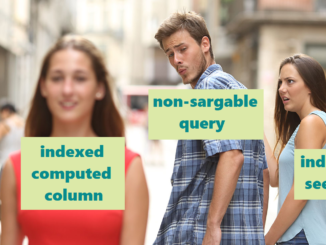
Not all stats should be auto-updated
Statistics auto-updates are generally a good thing–auto-update of statistics is the default behavior in SQL Server. Having the freshest information about the data “shape” helps to inform the best selection of an execution plan for queries. Except for when it doesn’t. Because It Depends™️ Let’s … [Read More]





